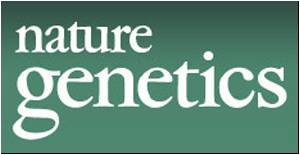Right in the middle of a crime scene on a television ‘whodunit,’ science can also gain from analysing the tracks of key players in the body's molecular site.

National Medal of Science winner Shu Chien, M.D., Ph.D., a UC San Diego professor renowned for his work on vascular mechanisms and atherosclerosis, praised Dr. Ley''s finding as a significant advance in understanding inflammatory mechanisms in disease. "They have elucidated the molecular and mechanical bases of this type of neutrophil rolling (in the blood vessels) that have major significance in inflammation," said Dr. Chien, director of UCSD's Institute of Engineering in Medicine. "Since inflammation is at the root of a large variety of diseases, these findings not only have fundamental importance in the mechanobiology of the cell, but also in understanding the pathophysiology of many disease states."
In his Nature paper entitled 'Slings' enable neutrophil rolling at high shear," Dr. Ley revealed how neutrophils use sling-like membrane tethers to latch on to the blood vessel wall during periods when blood flow is very fast. In making the discovery, Dr. Ley and Prithu Sundd, Ph.D., a researcher at La Jolla Institute, used "dynamic footprinting," a pioneering imaging technique they developed in 2010 that uses special microscopes and total internal reflection microscopy to see and photograph the neutrophil adhesion process with unprecedented clarity. Alex Groisman, Ph.D., an associate professor in UCSD''s Department of Physics, was instrumental in developing and constructing the microfluidic device in which these experiments were conducted and collaborated on the Nature paper.
Sussan Nourshargh, Ph.D., professor of Microvascular Pharmacology and head of the Center for Microvascular Research at Barts and The London Medical School, University of London, said the work provides another "major insight" from Dr. Ley whose discoveries, over the years, have repeatedly enhanced scientific understanding of the role of neutrophils in causing inflammation. In particular, she cited Dr. Ley''s groundbreaking work on the discovery of the leukocyte adhesion cascade, which explained the sequential steps used by neutrophils to clamp onto the blood vessel wall as they prepare to migrate to sites of infection. His latest finding reveals another important step in that process.
"This is a completely new cellular concept that will now be added as an additional step to the leukocyte adhesion cascade that describes the sequential cellular responses involved in guiding neutrophils to sites of inflammation," she said. "This pioneering work will without doubt pave the way for other researchers to explore the occurrence of "slings" in a wide range of inflammatory scenarios."
Like other immune cells, neutrophils travel throughout the body via the blood stream pursuing their infection-fighting duties. In order to accomplish their work, neutrophils must migrate through the blood vessel walls to sites of infection, injury or inflammation.
"The activities of neutrophils are very important for our survival, so they are the subject of significant scientific study," said Dr. Ley. While some scientists study their migration out of the blood vessel, Dr. Ley''s lab has focused on how neutrophils adhere to the blood vessel wall. "This is important because it provides an opportunity to develop new treatments based on modulating or blocking one of the steps in the adhesion cascade," said Dr. Ley, noting that earlier studies have shown that blocking even one of the steps can severely reduce neutrophil recruitment.
Advertisement
"For these cells, adhering under high shear is like being in a huge wind storm," said Dr. Ley. "The challenge in this storm is not to get blown away."
Advertisement
About La Jolla Institute
Founded in 1988, the La Jolla Institute for Allergy & Immunology is a biomedical research nonprofit focused on improving human health through increased understanding of the immune system. Its scientists carry out research seeking new knowledge leading to the prevention of disease through vaccines and the treatment and cure of infectious diseases, cancer, inflammatory and autoimmune diseases such as rheumatoid arthritis, type 1 (juvenile) diabetes, Crohn''s disease and asthma. La Jolla Institute's research staff includes more than 150 Ph.D.s and M.D.s.
Source-Newswise











